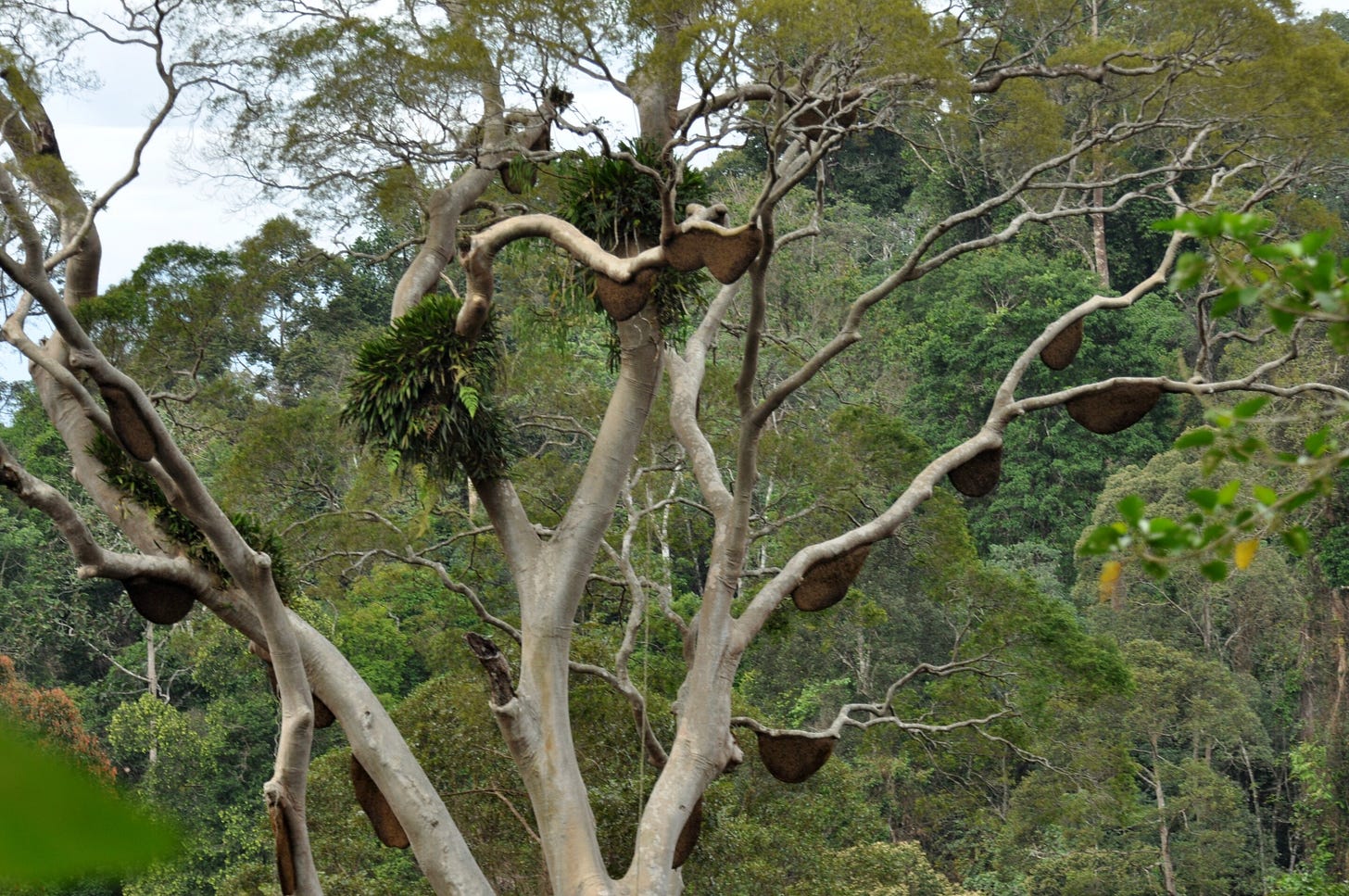Plants and People of Borneo: A Cultural and Ecological Connection
New research highlights the indispensable role of plants in the lives of Borneo's indigenous communities.
The Bond Between Nature and Culture in Borneo
The lush rainforests of Borneo are more than just biological treasure troves; they are cultural cornerstones for the island’s indigenous communities. A new biocultural database, developed by researchers at the Swedish University of Agricultural Sciences (SLU), reveals the profound connections between Borneo’s rich plant life and the survival, traditions, and identity of its people. Documenting over 1,300 plant species, the research underscores how biodiversity sustains cultural practices and emphasizes the need for sustainable land management in the region.
Cultural Ecosystem Services: A Bridge Between Biodiversity and Identity
As global biodiversity declines, the consequences extend beyond ecological loss to cultural erosion. For many communities, especially indigenous groups, nature forms the backbone of their traditions, stories, and livelihoods.
"The loss of biodiversity is also the loss of cultural values, which are essential for the survival and well-being of many communities," explains Petter Axelsson, a researcher at SLU.
The study, published in Current Opinion in Environmental Sustainability1, emphasizes the importance of recognizing cultural ecosystem services—benefits derived from the cultural and spiritual connections to nature—as integral to long-term environmental and social sustainability.

However, comprehensive data to assess these cultural values remain scarce, particularly in tropical regions like Borneo, which are rich in both biological and cultural diversity.
Borneo’s Unique Biocultural Heritage
Borneo, one of the most biodiverse regions on Earth, is home to countless endemic plant and animal species. This ecological richness is matched by its cultural diversity, with 306 officially recognized indigenous groups on the island.
The SLU-led study compiled data from 39 communities across Borneo into a groundbreaking biocultural database. It documents the uses of 1,319 plant species, detailing how specific parts—roots, leaves, sap, and bark—are used in daily life.
"The database now contains information on 1,319 plant species, including which parts of the plants are used and for what purposes," Axelsson notes.
Plants as Pillars of Culture and Survival
The diverse uses of plants in Borneo are categorized into 23 distinct groups. For example:
Traditional Medicine: Many plants provide remedies for ailments such as back pain, toothaches, and fever.
Construction and Crafting: Certain tree trunks are essential for boat building, while other species are used for crafting tools and household items.

The wealth of knowledge embedded in these practices reflects a profound understanding of the environment, passed down through generations.
Preserving Biocultural Connections for a Sustainable Future
The database not only catalogs the ecological and cultural significance of Borneo’s plants but also serves as a call to action. As the global biodiversity crisis accelerates, the preservation of such biocultural knowledge is essential for both environmental justice and cultural survival.
"This is a significant step forward in understanding the cultural values within these rich ecosystems," Axelsson asserts. "We hope that both academics and the general public will help us further develop the database and contribute to the incorporation of cultural values into policies and management practices."
By bridging scientific research with cultural insights, the study advocates for policies that respect and incorporate indigenous knowledge, ensuring sustainable land use practices that honor the intricate relationship between people and nature.
A Shared Responsibility
The work in Borneo highlights a critical lesson: biodiversity and culture are inseparable. Protecting the island’s ecosystems means safeguarding the cultural identities and traditions of its people. Efforts to expand and refine the biocultural database will not only deepen understanding of this intricate connection but also support global conversations on sustainability and environmental justice.
"Consideration of cultural ecosystem services is crucial for long-term sustainability," the research underscores, aligning with global biodiversity goals outlined by IPBES.
As more communities, researchers, and policymakers collaborate, Borneo’s unique biocultural heritage may serve as a model for conservation efforts worldwide.
Related Studies
These studies provide an extensive exploration of the IPBES framework, offering insights into its implementation, challenges, and impact on biodiversity science and policy.
Nature’s Contributions to People and the IPBES Framework
Explores the concept of "Nature’s Contributions to People" (NCP) introduced by IPBES and its implications for biodiversity policy.
Source: Nature Ecology & Evolution, 2018.Mainstreaming Biodiversity and Ecosystem Services into Decision-Making
Analyzes how the IPBES framework can guide policy and decision-making processes in planning and governance.
Source: Land Use Policy, 2016.Diverse Values of Nature and the IPBES Conceptual Framework
Examines the incorporation of diverse cultural, spiritual, and economic values of nature within the IPBES framework.
Source: Nature Ecology & Evolution, 2019.Co-Production of Knowledge in Ecosystem Services Assessments
Focuses on how the IPBES framework encourages the integration of indigenous knowledge in ecosystem service assessments.
Source: Sustainability Science, 2019.The IPBES Approach to Ecosystem Services
Discusses methodologies and practices aligned with the IPBES framework for assessing ecosystem services across regions.
Source: Current Opinion in Environmental Sustainability, 2020.Challenges and Innovations in IPBES Reports
Reviews the innovative elements and challenges encountered during the implementation of the IPBES Conceptual Framework.
Source: Environmental Policy and Governance, 2021.Global Assessment of Biodiversity: IPBES Contributions
Provides insights from the IPBES global assessment on biodiversity, demonstrating the application of its conceptual framework.
Source: Science, 2019.Bridging Indigenous and Scientific Knowledge Systems
Highlights how the IPBES framework facilitates the integration of indigenous knowledge into scientific biodiversity frameworks.
Source: Current Opinion in Environmental Sustainability, 2021.Participatory Knowledge Production and IPBES
Examines how participatory approaches underpin the IPBES Conceptual Framework, with a focus on stakeholder involvement.
Source: Ambio, 2022.Biodiversity Assessments and the IPBES Framework
Discusses regional biodiversity assessments conducted under the IPBES framework, emphasizing methodological consistency.
Source: People and Nature, 2020.
Díaz, S., Demissew, S., Carabias, J., Joly, C., Lonsdale, M., Ash, N., Larigauderie, A., Adhikari, J. R., Arico, S., Báldi, A., Bartuska, A., Baste, I. A., Bilgin, A., Brondizio, E., Chan, K. M. A., Figueroa, V. E., Duraiappah, A., Fischer, M., Hill, R., … Zlatanova, D. (2015). The IPBES Conceptual Framework — connecting nature and people. Current Opinion in Environmental Sustainability, 14, 1–16. https://doi.org/10.1016/j.cosust.2014.11.002


